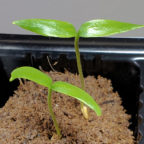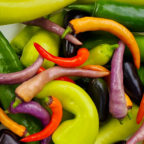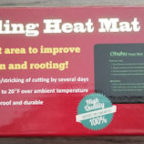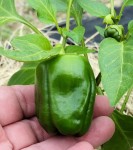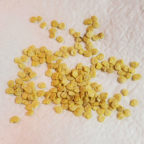Growing Chile Peppers
So, is growing chile peppers any different than growing bell or sweet peppers? Overall growing is the same, but there are some special considerations for hot chile peppers. And the hotter the pepper, the more important these differences become.
What’s the Scoville Rating of the Pepper?
You should be aware of the Scoville rating of your chosen peppers. The what rating? If you’re not familiar with it, check out the about chile peppers post to find out about the Scoville scale. Then come back here and read on!
The reason you need to know about the general Scoville rating is that the higher the Scoville, the warmer the peppers like it! This includes everything from germination to growing weather.
I personally have noticed a difference in temperatures for germinating seeds for non-chile peppers versus the hot ones. And also within the peppers based on their heat. My sweet pepper seeds almost always germinate faster than the chiles. In fact, I’m seeing it right now, with the latest batch of seeds (sweet and chile) that I am germinating. So far, it’s just the sweet/bell peppers that have popped their head above soil.
So growing chile peppers starts with warmer germination temperatures. If you want information about a way to keep the growing medium warmer than usual, check out the growing peppers in Florida post.
Growing Chile Peppers – Containers or Garden?
Most chile peppers don’t grow terribly large, so are fine for growing in containers if that’s your wish. The peppers that seem to always grow larger for me are the jalapeno peppers, so if you grow them in a container, make it a larger container. When happy in the garden, I’ve had jalapenos grow over 4 feet tall. Let me tell you — that was a lot of jalapenos!
Now here’s something anecdotal. In my experience, the hotter the pepper, the shorter the pepper grows.  It doesn’t mean a shorter pepper isn’t just as prolific as the larger peppers, though. In fact, the very hot chile peppers like Bolivian Rainbow (which I grow for ornamental and eating purposes) bears smaller peppers but tons of them! But these peppers rarely grow more than about 20 inches tall.  This isn’t a hard and fast rule, though — there are some habaneros that can grow 3 feet tall.
I’ve just ordered some bhut jolokia seeds, which happens to be the hottest pepper in the word these days (1,000,000+ Scoville). So I’ll see if they need even warmer soil and weather conditions. And I’ll see how tall they grow, compared to my average-sized habaneros.
Chile Pepper Weather
Keep in mind that chile peppers originated in Central America, so you know they love hot weather. And interestingly, some hot peppers like habaneros and scotch bonnets can live as a perennial in a climate with warm weather year ’round.
The farther north you grow them, the more hours of direct sunlight your chile pepper plants need. (Here in South Florida in the summer, I make sure they get morning and afternoon sunlight, but have dappled shade mid-day; our sun is strong!)
So keep your chile pepper seeds warmer during germination (up to 95 degrees for the hottest peppers), although 85 tends to be the best overall temperature. Make sure you plant your peppers in a very warm area of your garden with plenty of sunshine, but which still has good air circulation. Give them some fertilizer (I prefer organic fertilizers) and keep the soil damp, but not wet.
Then, enjoy the harvest of your chile peppers!
